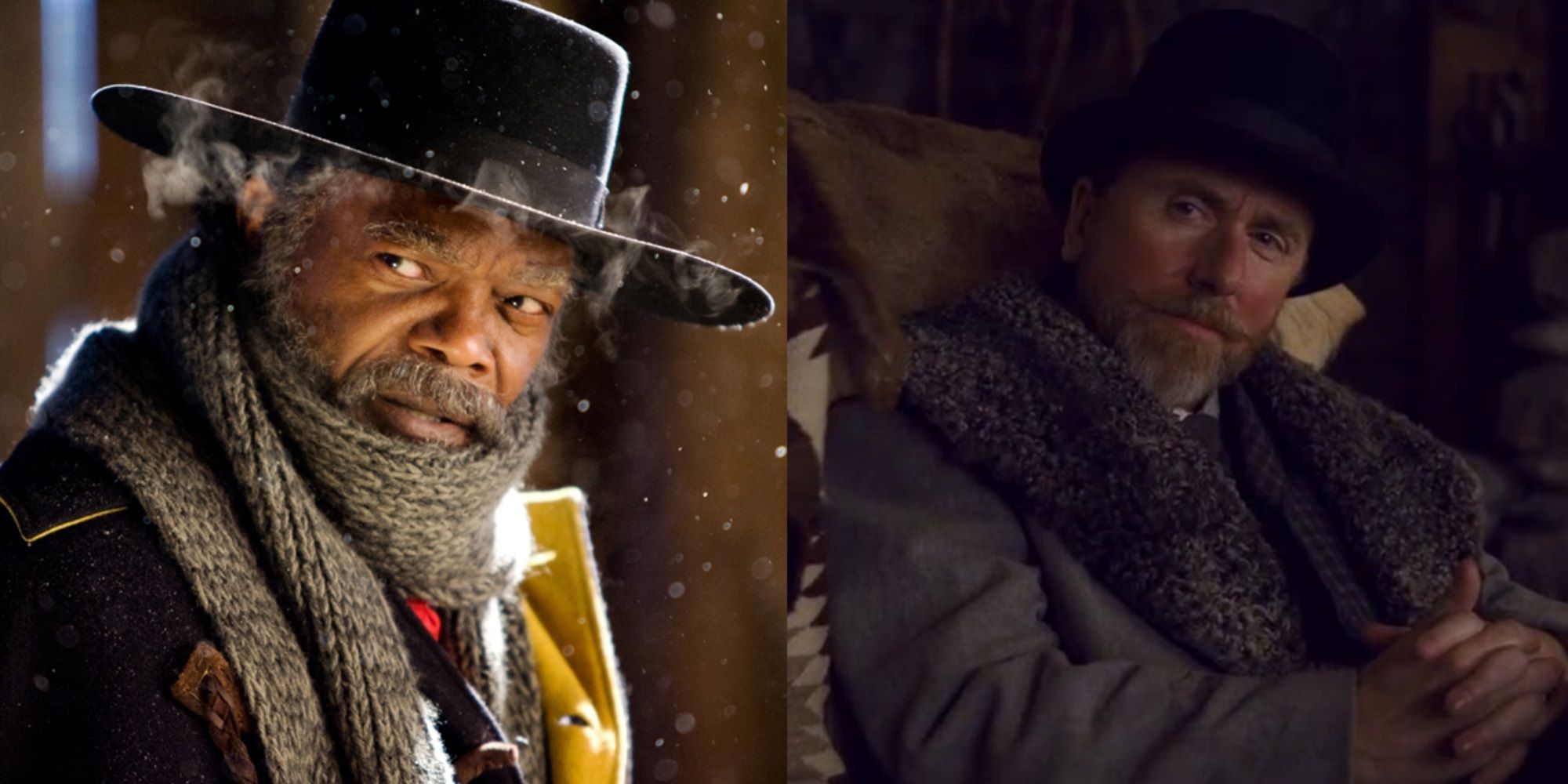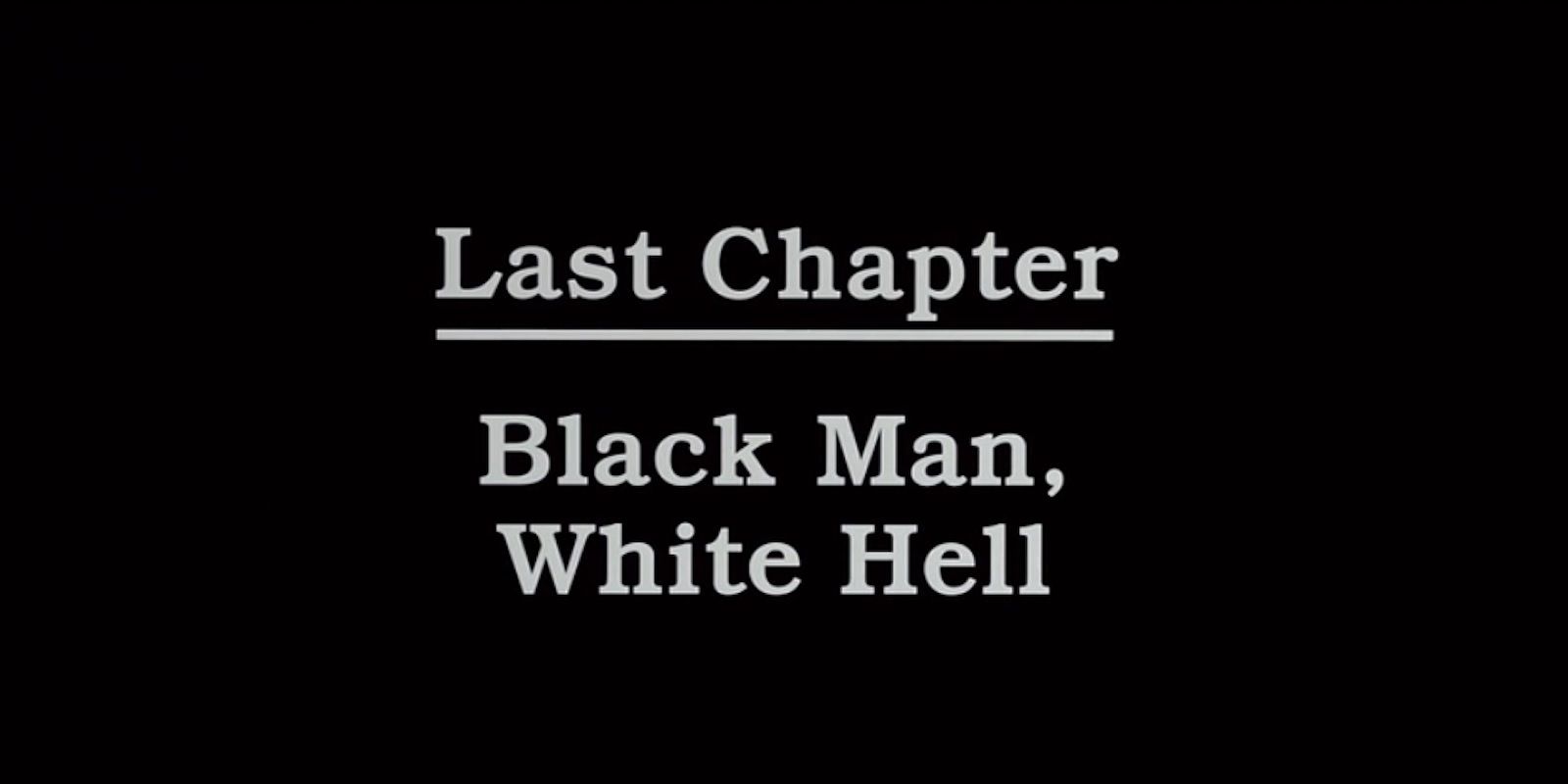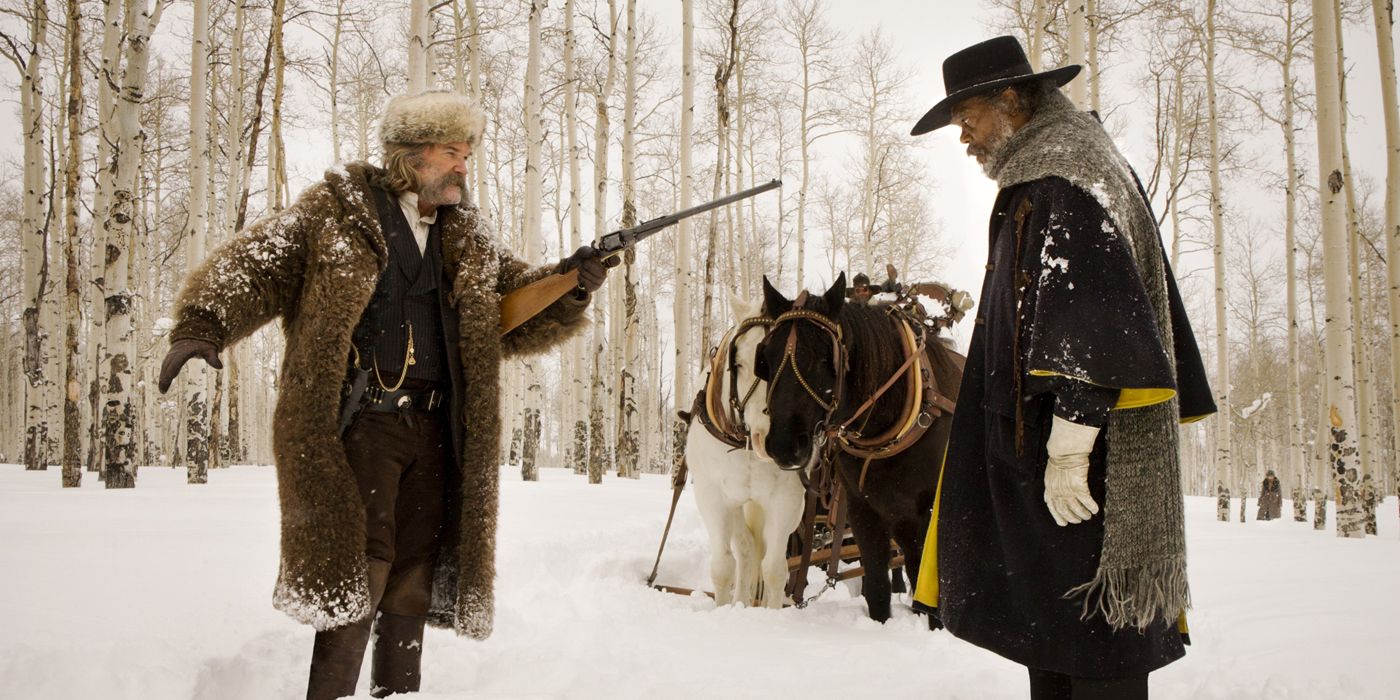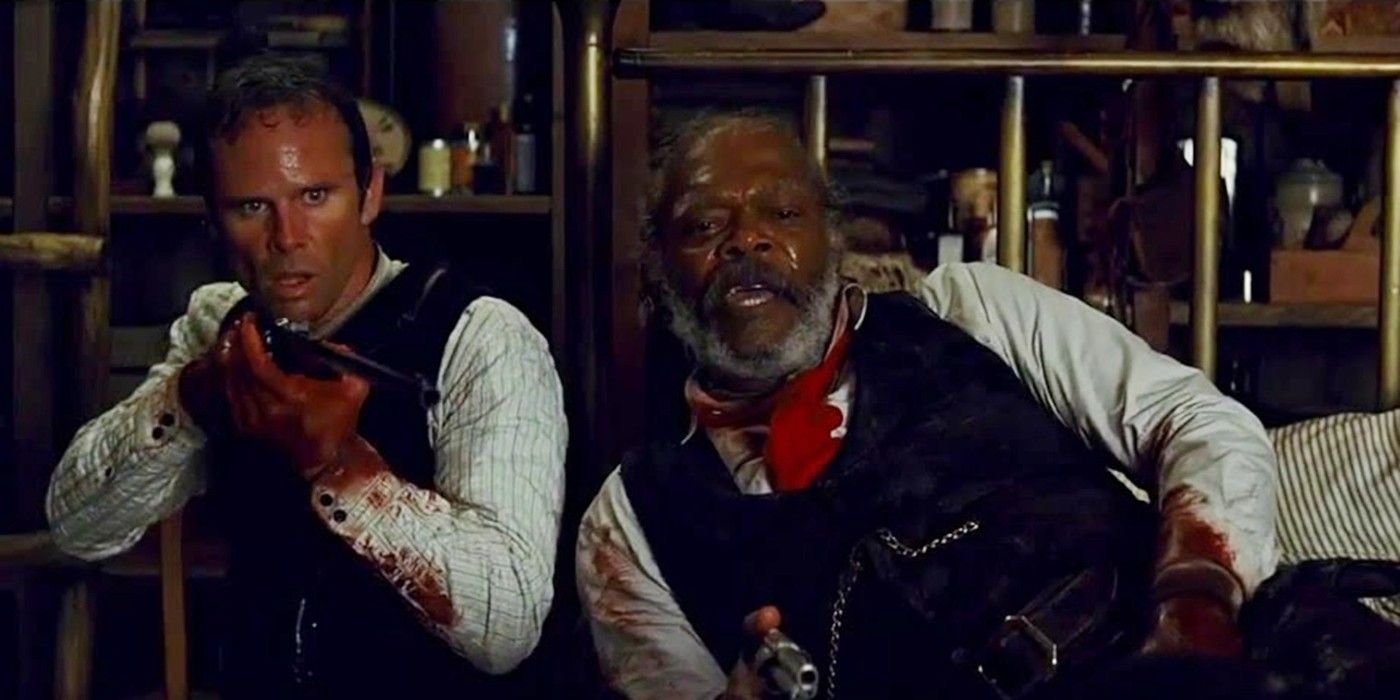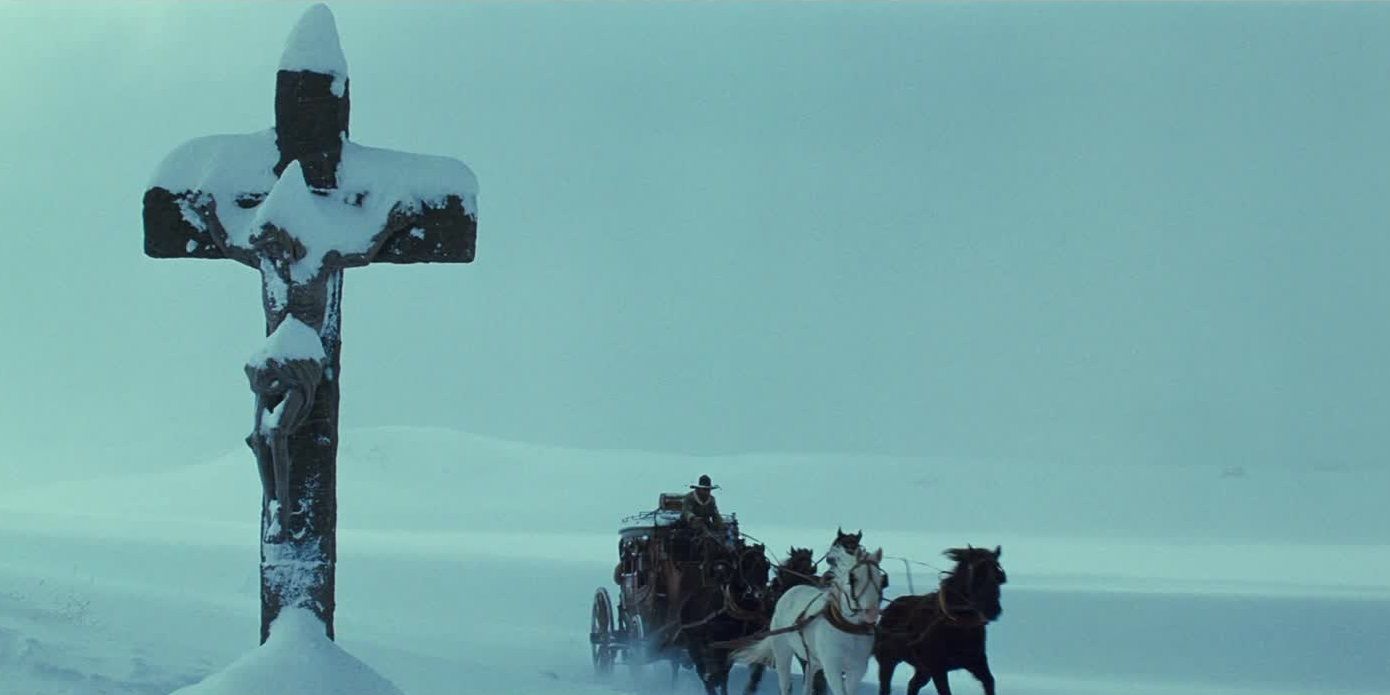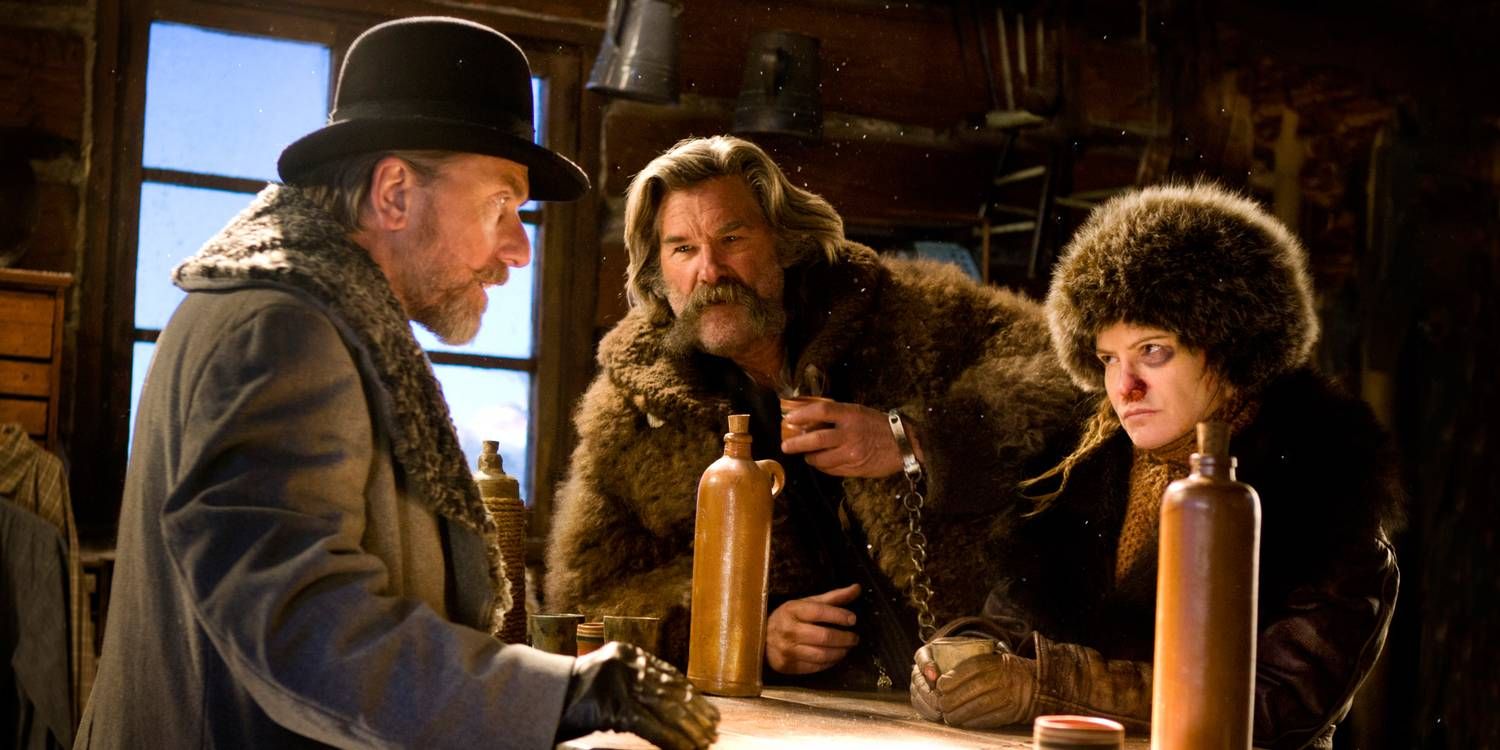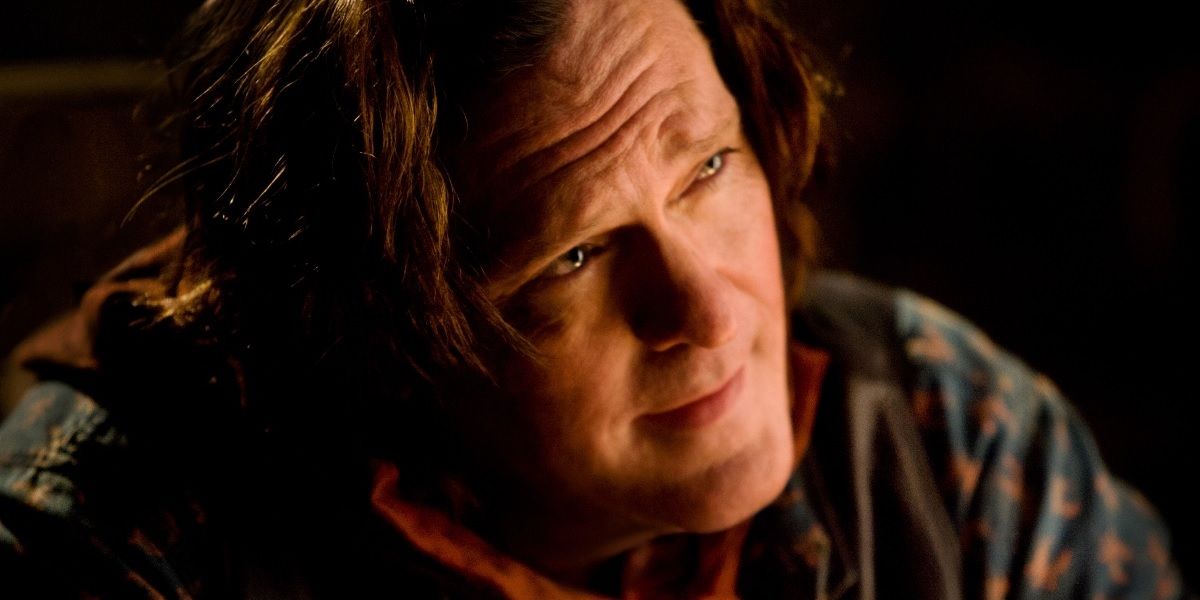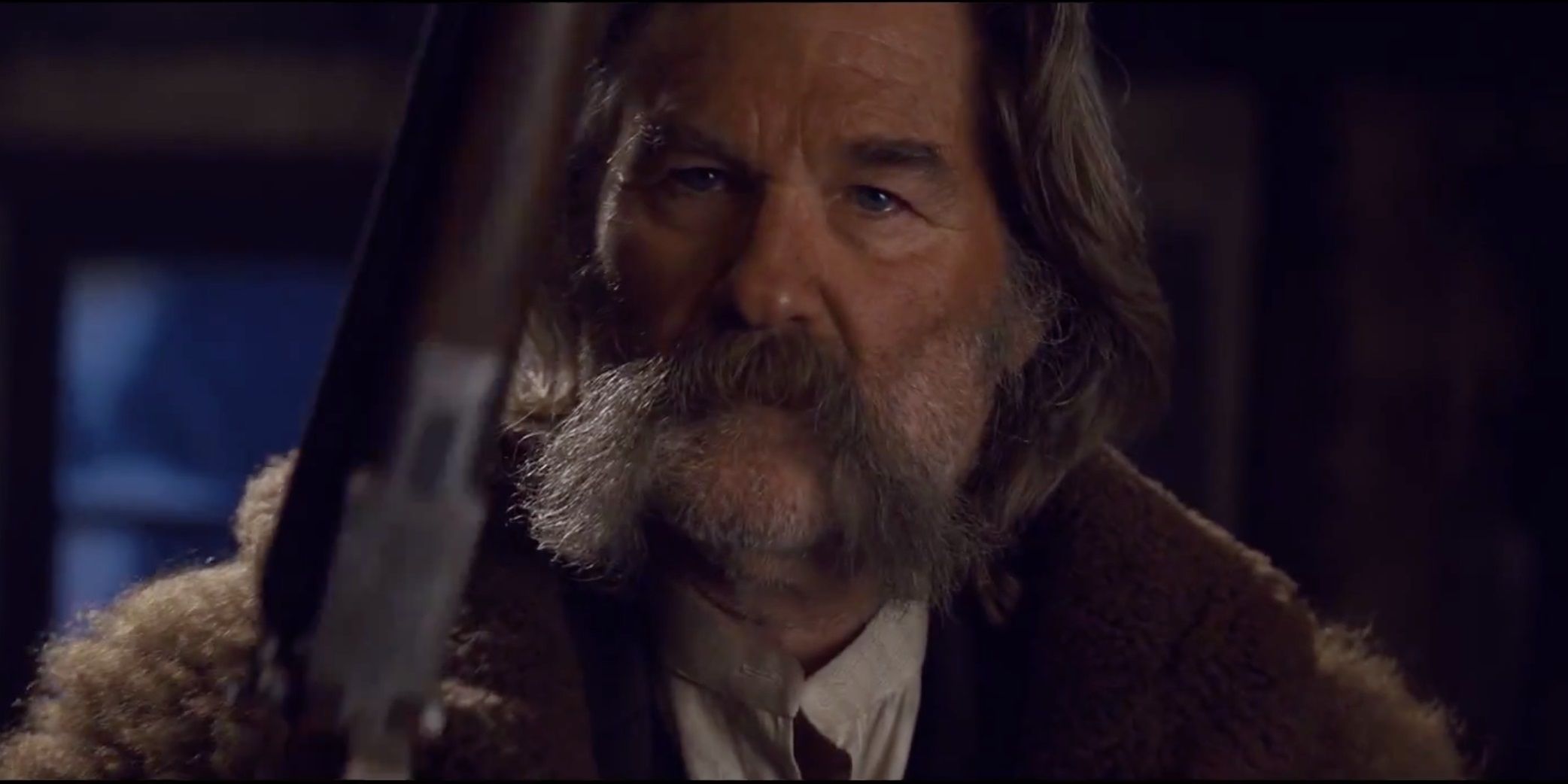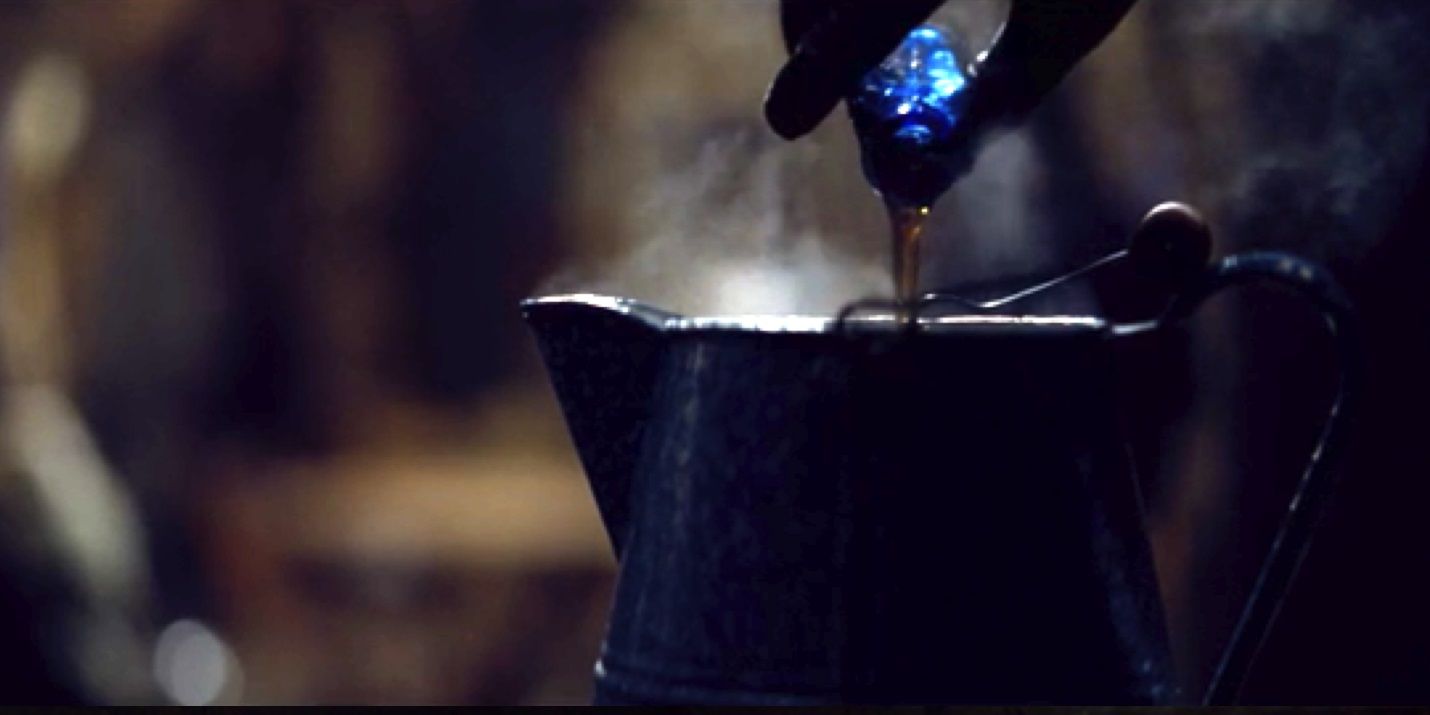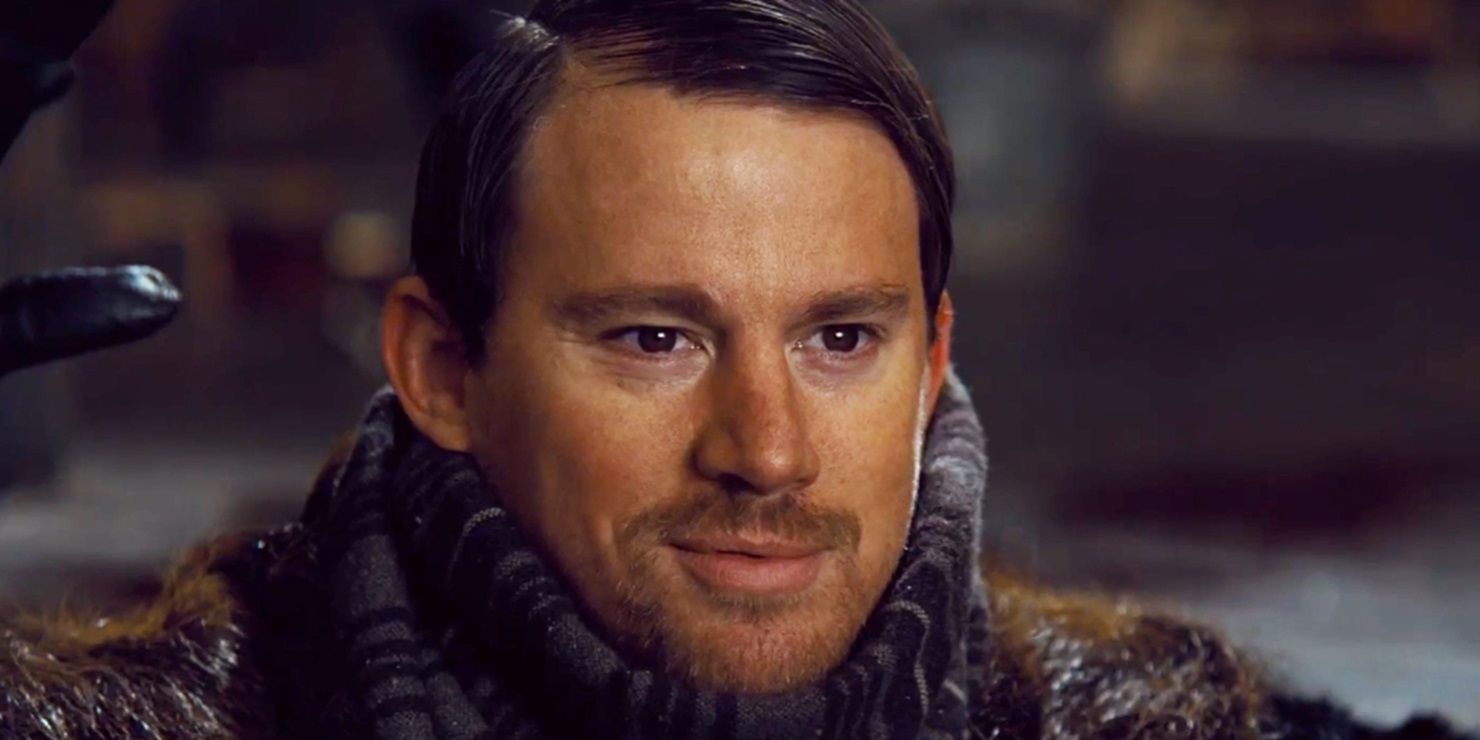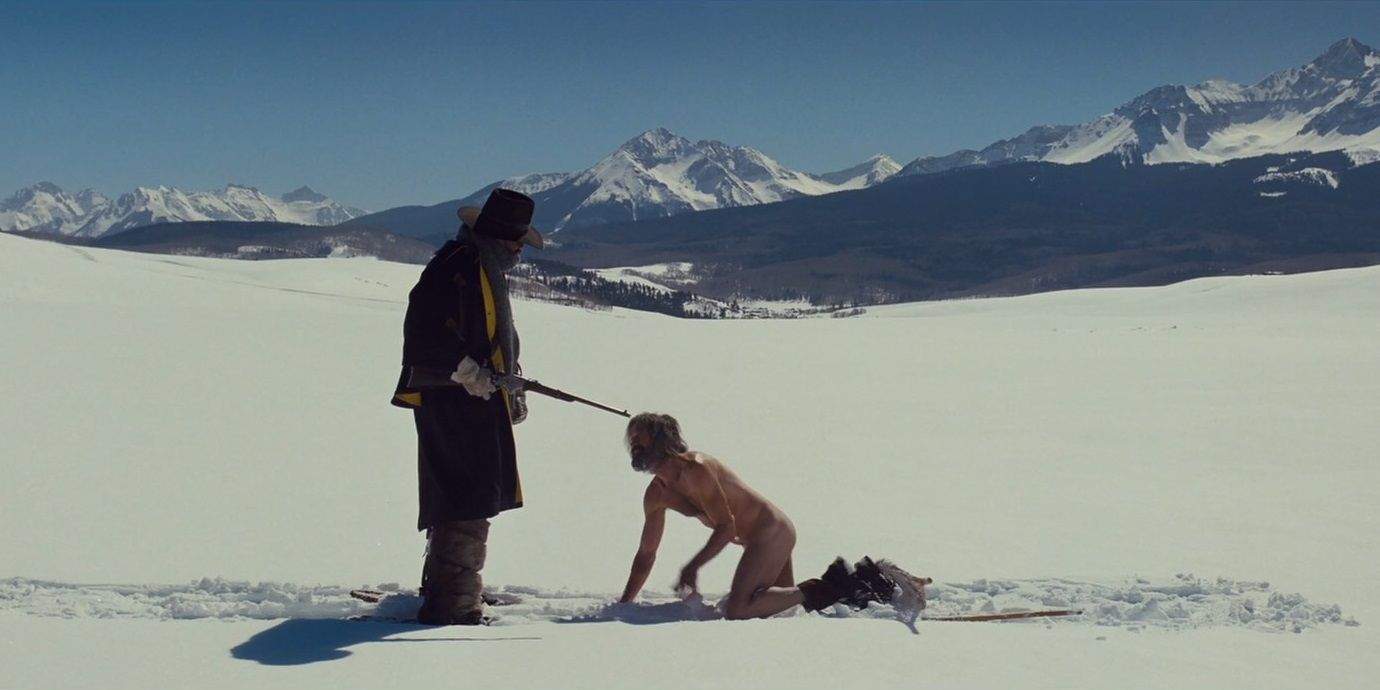Since Quentin Tarantino is one of the most iconic and celebrated directors on the planet, not a lot of his movies can be classified as “underrated.” Films like Reservoir Dogs, Pulp Fiction, and Django Unchained are cultural staples that every movie buff has at least a passing familiarity with. But there are some entries on Q.T.’s filmography that don’t get the love they deserve.
The writer-director’s second blood-soaked revisionist western, The Hateful Eight, is a prime example. It’s a bleak Sergio Corbucci western crossed with an intriguing Agatha Christie whodunit. The Hateful Eight exhibits many of Tarantino’s directorial trademarks, from its nonlinear storytelling to its graphic violence.
Chapters
Since the beginning of his filmmaking career, Tarantino has approached his scripts more like a novelist than a screenwriter. In some of his movies, he’s emulated novels quite literally by splitting the stories into chapters.
The first Tarantino film divided into chapters was Kill Bill. Then, Inglourious Basterds used the technique to jump from perspective to perspective all around the Second World War. The Hateful Eight is similarly separated into chapters, starting with “Last Stage to Red Rock.”
Ensemble Cast
There are a few de facto lead protagonists in Tarantino’s movies, from Jackie Brown to the Bride to Django, but most of his films are ensemble pieces. In The Hateful Eight’s titular octet, there are no massive A-list movie stars like Brad Pitt or Jamie Foxx.
The cast has big-name actors like Kurt Russell and Bruce Dern peppered in with lesser-known performers like Walton Goggins and Demián Bichir. No one gets more of a spotlight than anybody else. If the movie has a lead, it’s Samuel L. Jackson, but it’s arguably a classic ensemble piece that doesn’t have just one lead actor.
Uncompromising Violence
From the moment Mr. Blonde cut off a cop’s ear in Reservoir Dogs, Tarantino became renowned – or, in some circles, notorious – for filling his movies with graphic violence.
With huge bursts of blood and a disturbing flashback torture sequence, The Hateful Eight is one of Tarantino’s most violent movies. Its depiction of violence was controversial for the excessive brutality endured by the octet’s only female character, Daisy Domergue.
Ennio Morricone
Throughout his career, Tarantino has pilfered the classic spaghetti western scores of Ennio Morricone to play on his own soundtracks. For The Hateful Eight, Tarantino utilized an original score for the first time and managed to secure none other than Morricone himself to compose it.
Morricone won an Academy Award for his Hateful Eight score, becoming the oldest person to win a competitive Oscar. The Hateful Eight’s atmospheric music is closer to Morricone’s score for The Thing than any western score, because the legendary composer viewed The Hateful Eight as a horror movie.
Driven By Dialogue
Tarantino’s early films were anchored by his idiosyncratic dialogue. From Kill Bill onwards, Tarantino focused on more action-driven narratives. Movies like Death Proof and Django Unchained have plenty of dialogue, but the car chases and shootouts are the main attraction.
The “chamber drama” premise of The Hateful Eight, confining its characters to a haberdashery in a snowstorm, marked a refreshing return to Tarantino’s dialogue-oriented filmmaking.
Tarantino’s Company Of Actors
The cast of The Hateful Eight includes many of Tarantino’s regular collaborators. This was Q.T.’s sixth movie to feature Samuel L. Jackson. Jackson is surrounded by fellow performers plucked from Tarantino’s recurring company of actors, like Tim Roth, Michael Madsen, Kurt Russell, and Bruce Dern.
Zoë Bell, after doubling for Uma Thurman in Kill Bill and playing herself in Death Proof, has a cameo appearance in The Hateful Eight’s rug-pull flashback sequence.
Borrowing From Other Movies
Tarantino became an icon of the postmodern movement by plundering cinema history, extracting all the coolest shots, and stringing them together to create something new. Like the rest of Tarantino’s movies, The Hateful Eight recreates familiar shots, lines, and story points from existing classics.
The title is a parody of The Magnificent Seven. Samuel L. Jackson wears Franco Nero’s Union coat and scarf from Django. Joe Gage’s murderous flashback is a nod to the outhouse shootout from Unforgiven. Kurt Russell’s John Ruth recites every iconic movie quote from John Wayne’s “That’ll be the day!” line from The Searchers to Diane Keaton’s “La-di-da” line from Annie Hall.
Nonlinear Story Structure
After jumping around the story timelines of both Reservoir Dogs and Pulp Fiction, Tarantino became renowned for his nonlinear narratives. He doesn’t tell his stories in chronological order; he tells them in the most interesting order.
In The Hateful Eight, Tarantino builds an air of mystery around the inhabitants of Minnie’s Haberdashery before the penultimate chapter goes back in time to explain who they are and why they’re there.
Celebrity Cameo
From Christopher Walken’s turn in Pulp Fiction to Jonah Hill’s turn in Django Unchained, many of Tarantino’s movies feature a cameo appearance by an A-list celebrity that the audience will instantly recognize.
Toward the end of The Hateful Eight, Tarantino reveals that Channing Tatum has been hiding under the floorboards the whole time, waiting for the right moment to strike.
No Traditional Heroes
When Tarantino appeared on The Joe Rogan Experience, he explained the driving concept behind The Hateful Eight: “The idea is, there’s no good guys in the movie; they’re all f***ers.” There are no traditional heroes in The Hateful Eight; they’re all villains.
Most of Tarantino’s movies lack a traditional protagonist. The hero of Reservoir Dogs is a jewel thief, the hero of Pulp Fiction is a mob hitman, and the hero of Kill Bill is an ex-assassin out for blood.

